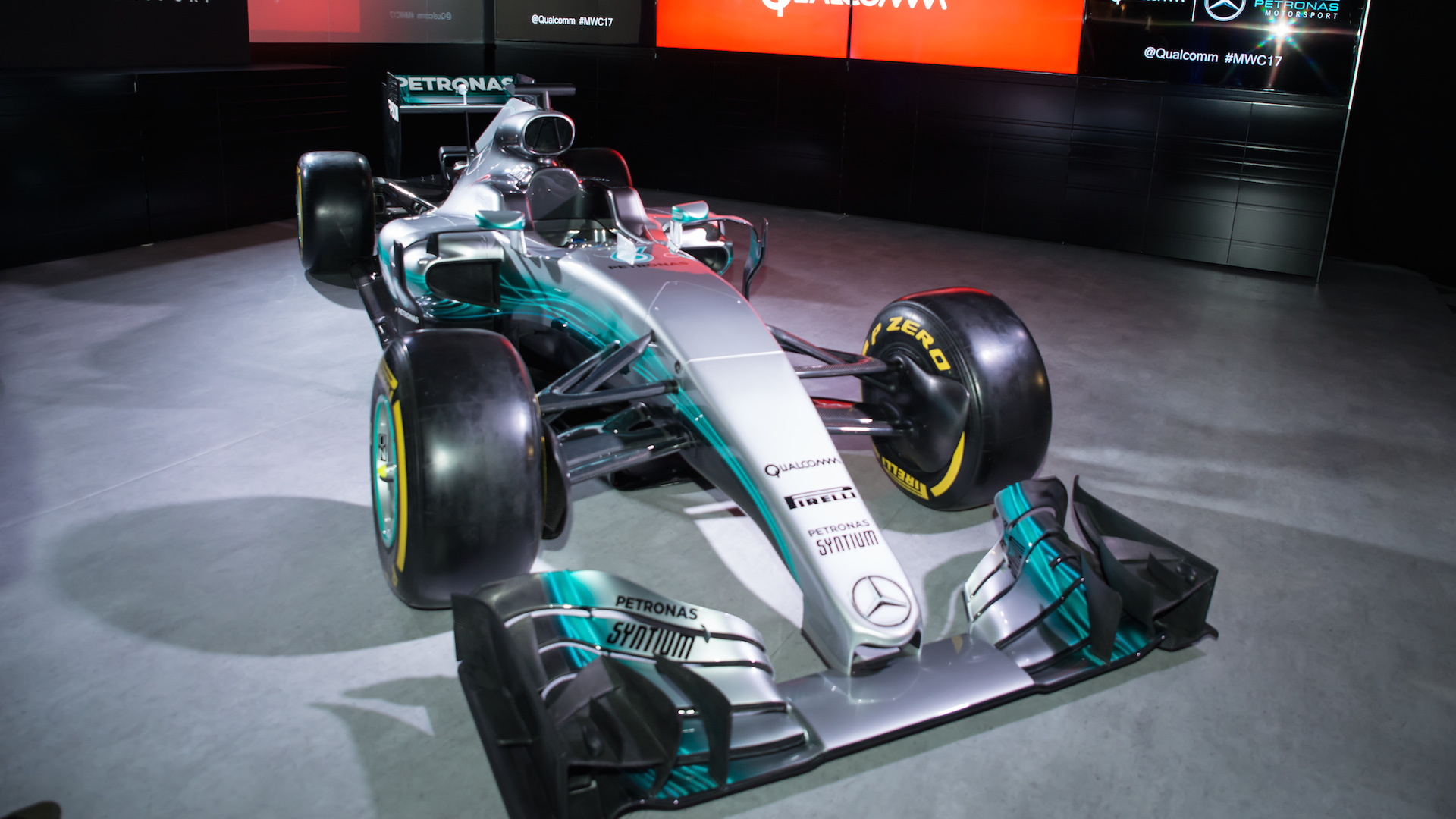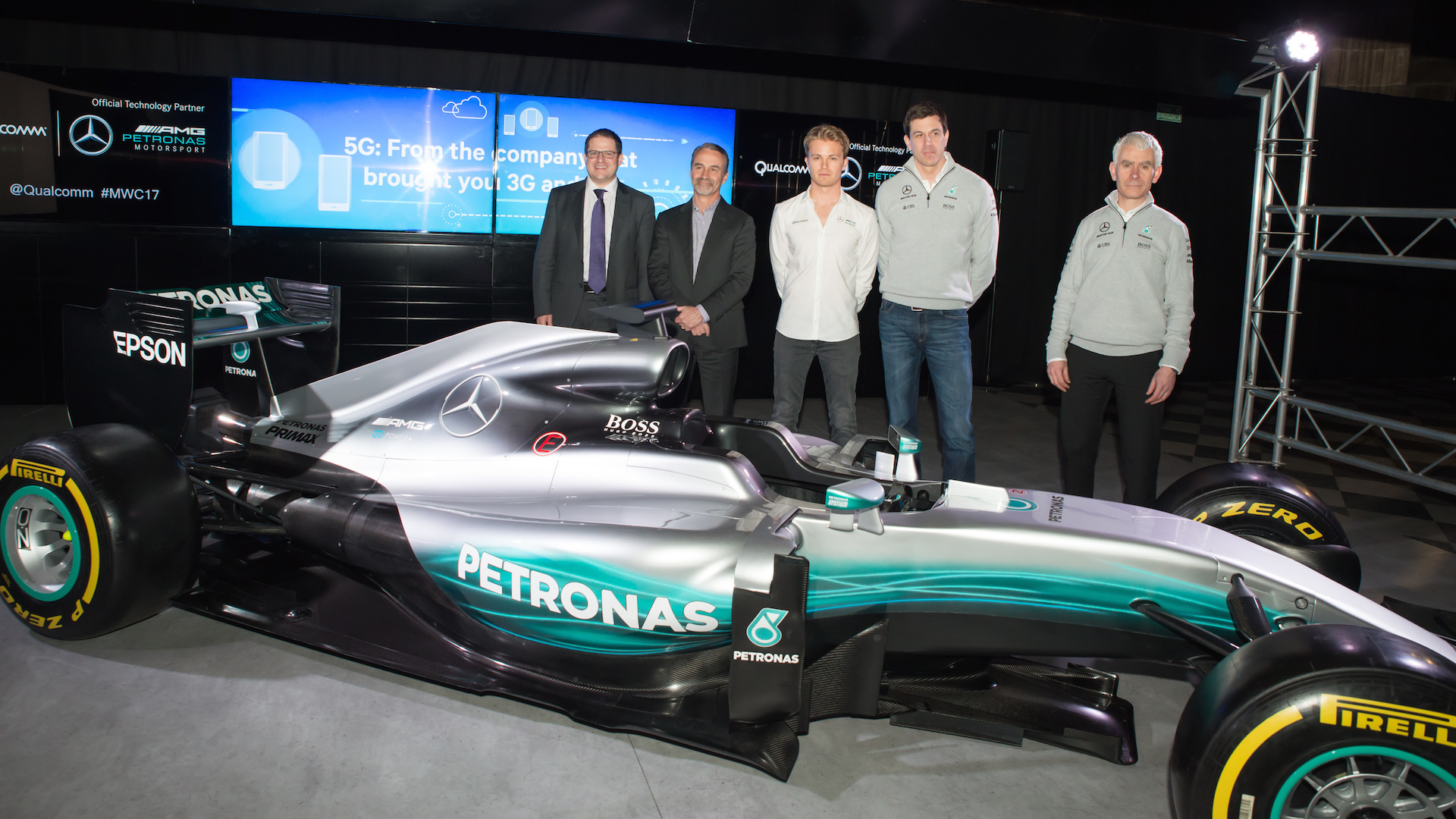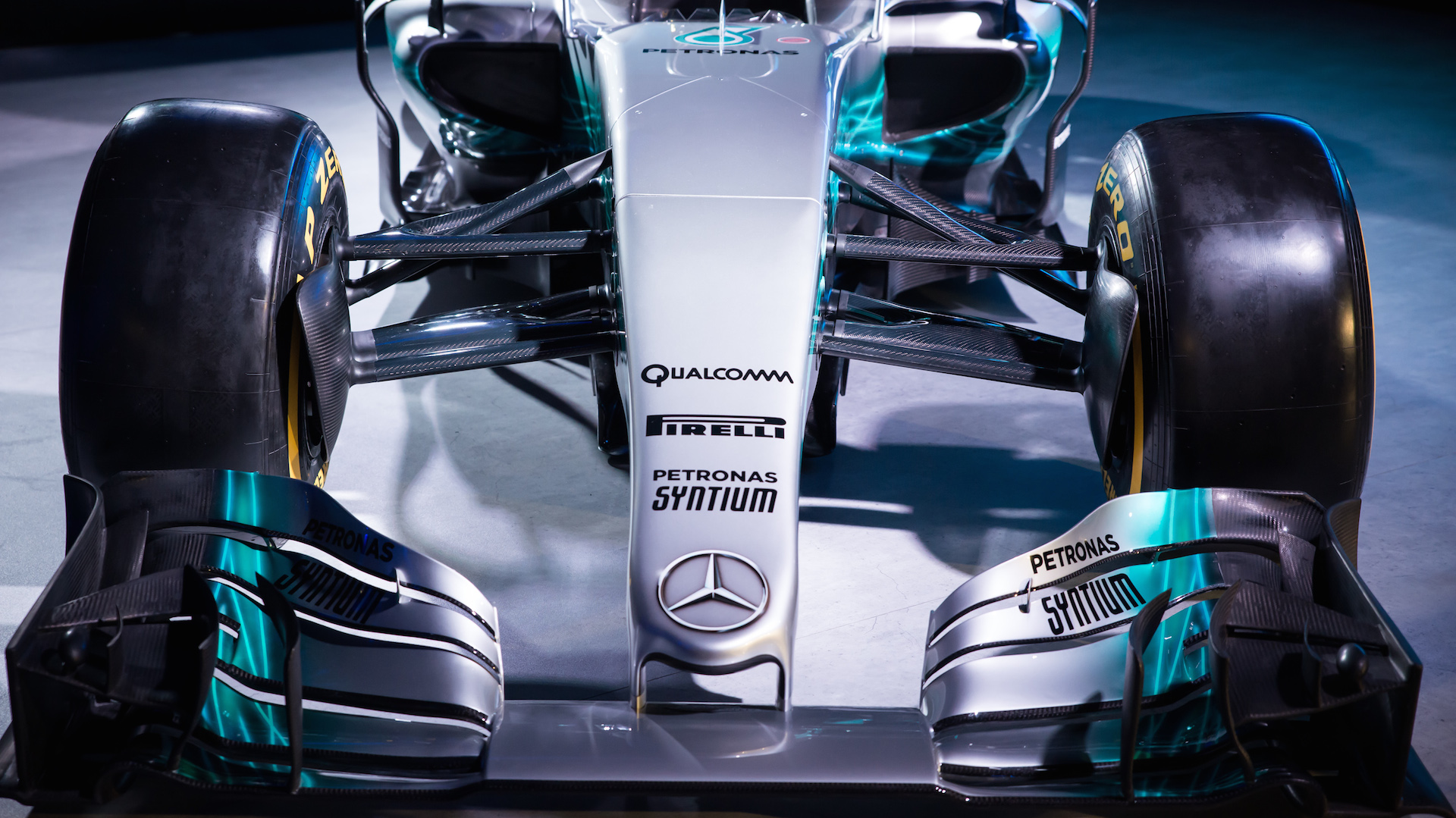How a smartphone giant is changing the face of Formula 1
Formula 1 is back, and thanks to technological changes it’s going to be faster and closer than ever before

Formula 1 is back, and thanks to major regulation changes it’s going to be faster and closer than ever. F1 cars aren’t just about high speeds and loud noises anymore though. They’re also about data. Loads and loads of data.
It might not be the sexiest part of the sport, but each of the 20 cars that will line up on the grid in Melbourne this weekend will be playing host to more than 200 sensors. These will be logging more than 1,000 channels of data – more than 2GB of information per hour, per car is generated while they’re out on the track.
All of that data has to be analysed by the team between practise sessions in order to perfectly fine-tune the car for optimum performance come qualifying and the race. Before that, however, you’ve got to get it off the car, and that’s where a smartphone supplier is changing the sport.
The supplier in question is chipset maker Qualcomm who, along with three time reigning joint drivers and constructors champions, Mercedes-AMG Petronas Motorsport, is changing the face of the F1. How? Well it’s all down to some innovative wireless technology.
Wireless win
Before all that data can be analysed, it must first be transferred from the car. Traditionally, that means pulling the car into the garage before manually plugging it into a computer and waiting for it all to slowly download. Things are changing though, at least for one team.
Utilising new 60GHz wireless connectivity technology, Qualcomm is allowing Mercedes to cut the cables and adopt wireless data downloads, and that’s a much bigger deal than it sounds.
Pole position got me the race win in Spa, that race win got me the World Championship, so there’s a knock-on effect.
Nico Rosberg, F1 World Champion
“When we are coming down the pit lane, the data all gets transferred instantly to the engineers,” reigning F1 World Champion, Nico Rosberg, explained speaking exclusively with TechRadar.
Sign up for breaking news, reviews, opinion, top tech deals, and more.
“The other teams need to wait until they’re in the garage, plug the cable in and wait for the data to download.

"They lose 5 minutes on us, and 5 minutes in that one hour and 30 minutes [practice session] makes a big difference.”
In a sport where fractions of a second separate much of the grid, five minutes across each of a race weekend’s three practice sessions is an age. It’s not the difference between first and tenth on the grid, but the difference between winning the championship and losing it.
“An example was Spa last year,” Rosberg explained. “In third practice I was third place, miles behind and in that time, thanks to the quick data transfer, we transformed the car and I got pole position.
“Pole position got me the race win in Spa, that race win got me the World Championship, so there’s a knock-on effect.”
This isn’t just a gimmick either, or a partnership based around little more than big sponsorship bucks and having a major tech company’s logo splashed across one of the most iconic cars in the world. It’s a partnership with real, tangible benefits for both involved.
For Mercedes, it's a key, measurable advantage over the competition. For Qualcomm, it’s a proof of concept and an opportunity to test wireless technologies that it expects will filter down to your production car in the coming years.
How the technology works
Although Qualcomm is best known for its smartphone CPUs, don’t expect its F1 car-bound breakthroughs to be heading to your handset anytime soon. The technology used is based on breakthroughs set to revolutionise both the wireless and automotive industries, however.
Built into Mercedes-AMG’s telemetry system, Qualcomm is adding 802.11ad Wi-Fi support that uses the high-speed 60GHz spectrum.
Just because the technology is wireless doesn’t mean it gives Mercedes an unlimited range, letting them download data from the car as it circles the track, however. Instead, transfers are still limited to the car being close to the garage.

“We’ve done proof of concept with 60Ghz. It’s a hybrid system, both line of sight, coming down the pitlane with a 5Ghz band, and then switching when we’re in closer proximity, about 4 metres, to the 60GHz,” Geoffrey Willis, Technology Director of Mercedes-AMG Petronas Motorsport, explained.
“Previous we’ve been in the situation where we have to bring the car in, plug it in to the umbilical, download it and wait. Now we can start to get that data off the car, even before the car’s in the garage.
“That means we can start making decisions around car setup and tyre pressures.”
Speaking exclusively with TechRadar, Toto Wolff, Team Principle and Executive Director & Head of Mercedes-Benz Motorsport, added: “We are able, with the speed of processing and wireless download, to get that data earlier.
It’s a hybrid system, both line of sight, coming down the pitlane with a 5Ghz band, and then switching when we’re in closer proximity.
Geoffrey Willis, Mercedes-AMG Petronas
“Within half a minute or a minute, you can get a massive amount of data downloaded from the car, from these several hundred sensors, and you’re able to process it and able to make decisions in the same time that the competition are just getting into the garage and plugging the cable into the car.”
What it means for the sport
Having trialled the 60GHz downloads last year, Qualcomm and Mercedes have already turned heads in the F1 paddock, generating envious looks for the advantage being gained. With the team to further use the technology in select practice sessions this year, its only going to garner more attention.
“I was impressed with that,” Ted Kravitz, Sky Sports F1’s technical expert and pit lane reporter, said of the 60GHz connections. “It could download 40 minutes of 4K footage in 5 seconds. It’s pretty extreme and that’s got to be the future.”

Suggesting its only a matter of time until the rest of the paddock moves to wireless data downloads, he added: “All credit to Mercedes for teaming up with sponsors that could actually give them this kind of technical advantage.”
While this car to pit communication is an innovative step forward for what’s already one of the most technically advanced sports in the world, Kravitz believes it could reopen the discussion of two way data channels between the pit wall and the cars on track.
“Downloading data in one way is all well and good and does save you time in the garage, but shore to ship telemetry is still banned in F1,” he explained.
“The download speeds are all well and good, but what I’d really like to see is telemetry the other way come back, and the teams be able to use some of that data transmission from the pits to the car, wherever it is, telling it to do stuff. That would be really clever.
“In the mid-2000s, they could send messages from the pit, to the car, to make the car fix itself in the middle of races.”
What this means for fans
Formula 1 is more than pure entertainment. It’s a proving ground for technology that eventually trickles down to consumer vehicles. It’s already happened with everything from more efficient engines to electric car-enhancing kinetic energy recovery systems.
While modern production cars host Wi-Fi connectivity, the power of 802.11ad connections via the 60GHz band haven’t. That doesn’t mean they won’t, however.

“The technology and its hardware first needs to be tested in extreme and unforgiving environments before it can be expected to endure years of use in consumers' cars,” a Qualcomm spokesperson explained.
“What better place than the F1 arena, where there’s more data being downloaded in a few hours than most of us will need in a week.”
Patrick Little, Qualcomm’s Senior Vice President and General Manage of Automotive, told us: “In the automotive space, we’re going to have more innovation in the next 10 years than there was in the 100 years previous.
“Everything is just moving really quickly, moving for everyone’s safety and moving towards autonomy.”
Technology and its hardware first needs to be tested in extreme and unforgiving environments.
He added: “One of the things we’re doing together, is working out how to utilise the sensors that are placed all over your car that collect very important information. How to download this information as soon as you pull into your garage and give it to you in a useable form.
“We’ll all soon be pulling into our garages and automatically downloading our sensor data.”
Until then, we’ll all just have to watch F1 on TV, which this year is being broadcast in Ultra HD for the first time thanks to the Sky Sports F1 channel, and await the filtering of tech.